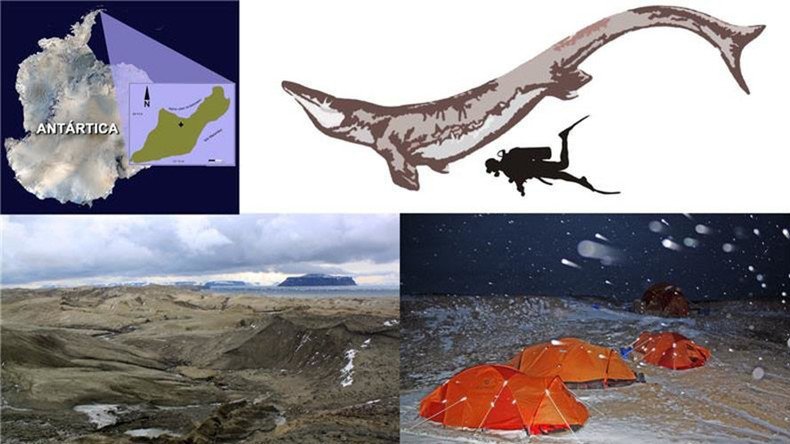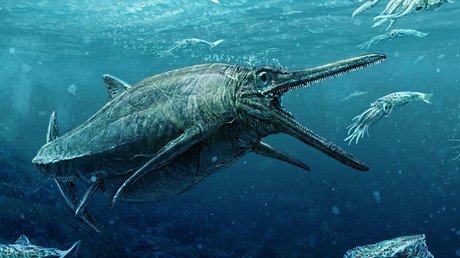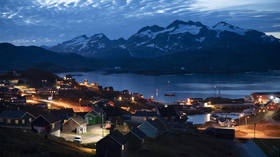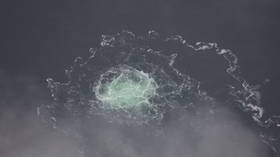Evidence of enormous ancient sea lizard found in Antarctica

A new species of giant sea lizard has been discovered through fossilized remains found in Antarctica – making it the continent’s largest known marine predator.
Don’t cancel your tickets down south just yet, however, as the fossil remains were discovered in the 66-million-year-old rocks of Seymour Island, leading scientists to believe it lived near the end of the dinosaur era – and is likely now extinct.
Researchers from the University of Chile have determined that the 10 meter (33-foot) long ‘Mosasaur’ likely lived in Antarctica when the region boasted a much warmer climate, during the Cretaceous period.
A new study published on Science Daily has revealed the predator “attained truly gigantic size” and thrived in the sea because of their large paddle-like limbs and long deep tail. The Mosasaur, a much larger relative of the modern-day lizard, ate “filter-feeding marine reptiles”.
Named by the Chilean scientists as ‘Kaikaifilu hervei’, the lizard is the largest of its kind ever found in the southern hemisphere. New discoveries are rare in Antarctica is rare because of the extreme conditions paleontologists face.
Indeed, the fossils which were central to this study were found practically by accident back in 2010. A team of Chilean scientists were working in extremely poor weather conditions when they made the discovery.
“Only during their last days in the field, after dreadful walks through knee-deep mud, they made a truly exciting discovery in 66 million year-old rocks,” the study says.
"Prior to this research, the known mosasaur remains from Antarctica provided no evidence for the presence of very large predators like Kaikaifilu, in an environment where plesiosaurs were especially abundant,” says one of the authors of the study, Rodrigo Otero.
READ MORE: Sea Monster: Giant squid could reach a staggering 20 meters in length, study finds
“The new find complements one expected ecological element of the Antarctic ecosystem during the latest Cretaceous," he added.
Scientists will “without a doubt” continue to explore Antarctica in the hope of unearthing even more exciting discoveries, says the paper, and ultimately learn how the changes in marine ecosystems can impact the extinction and evolution of these mysterious animals.













